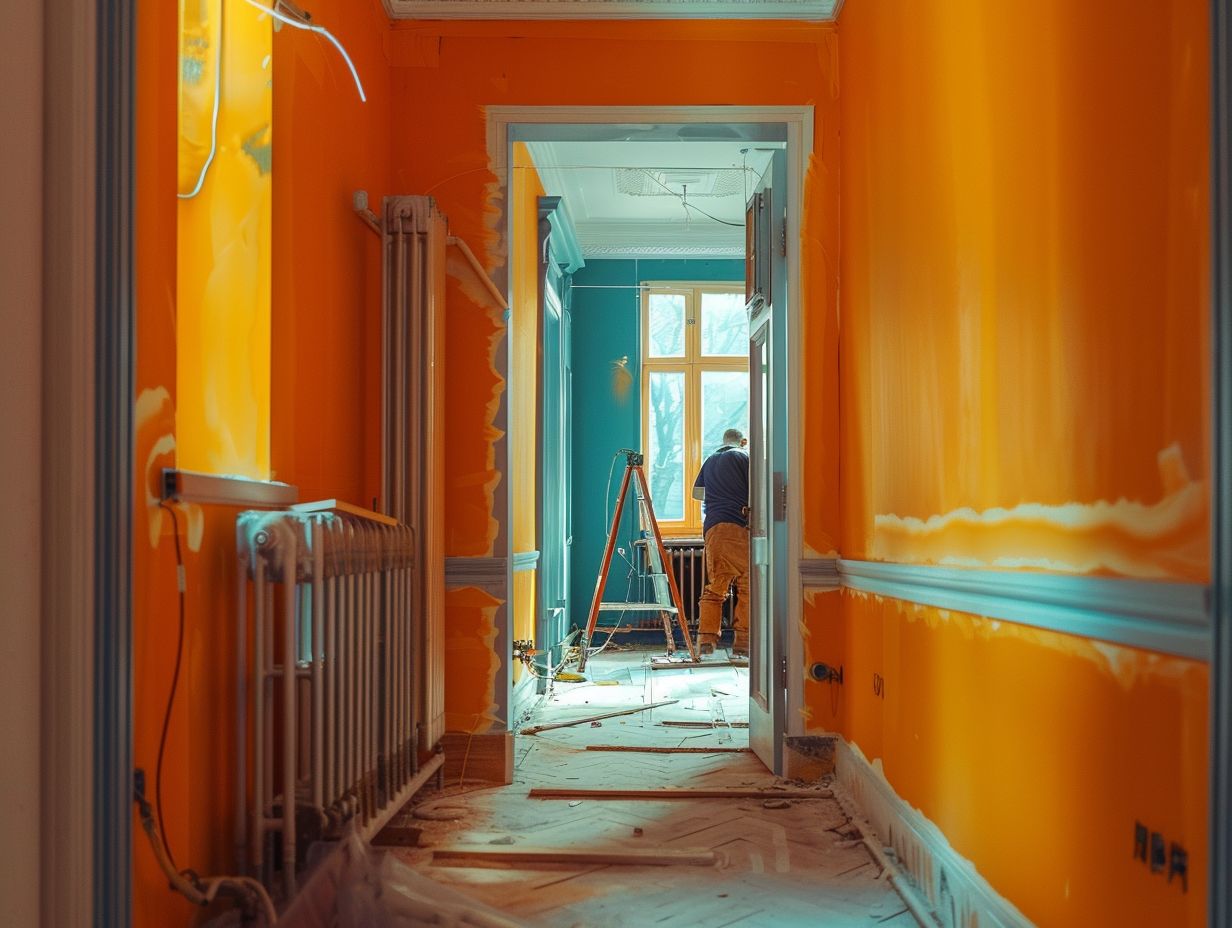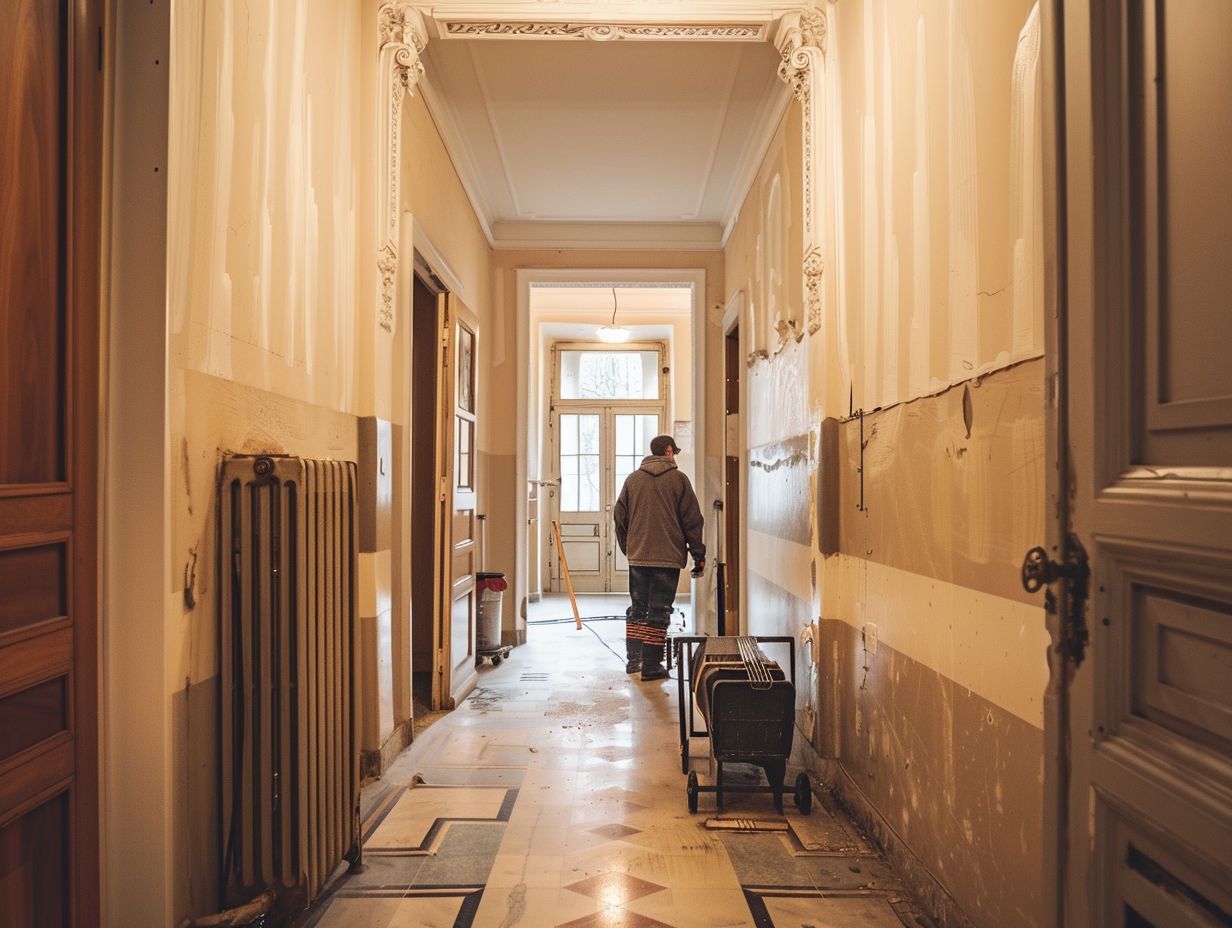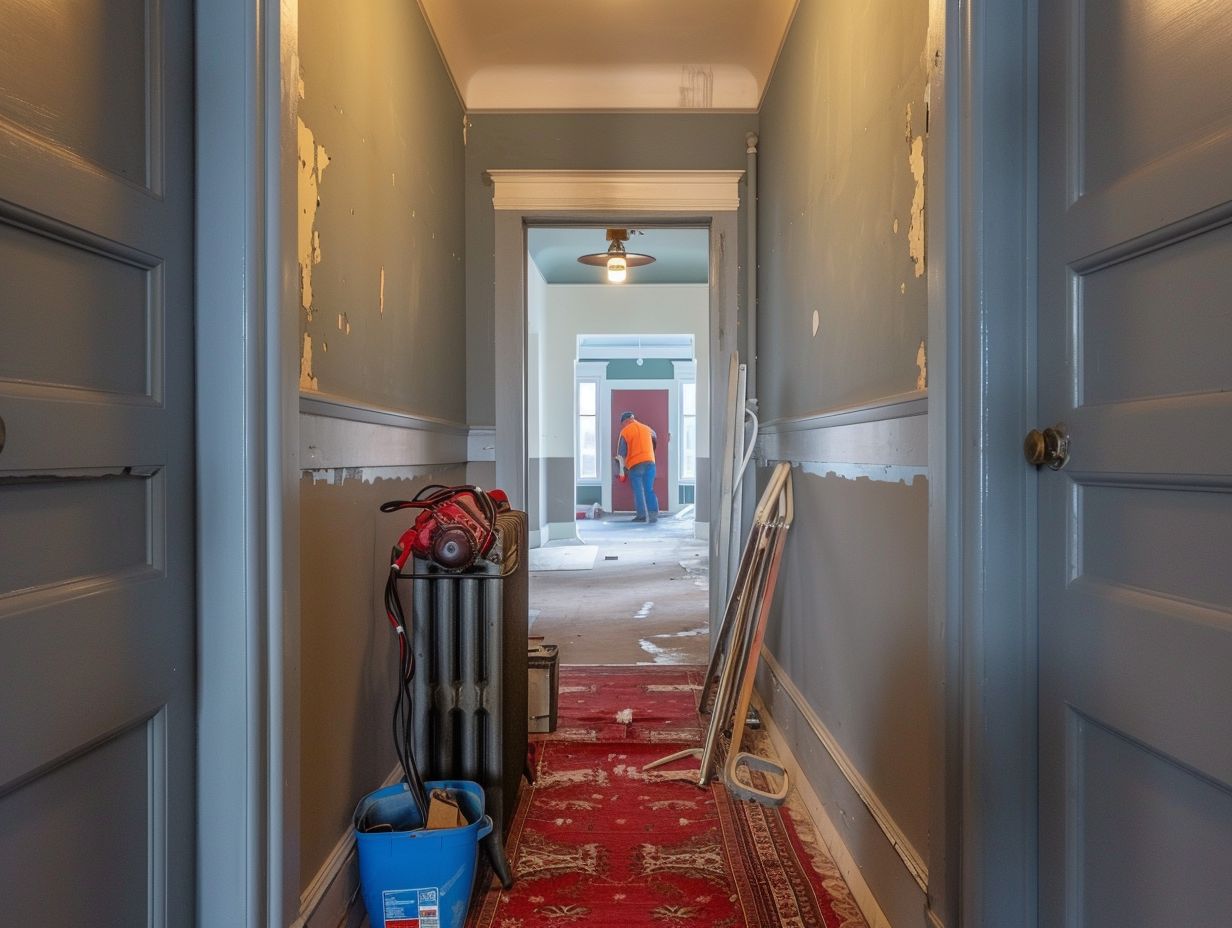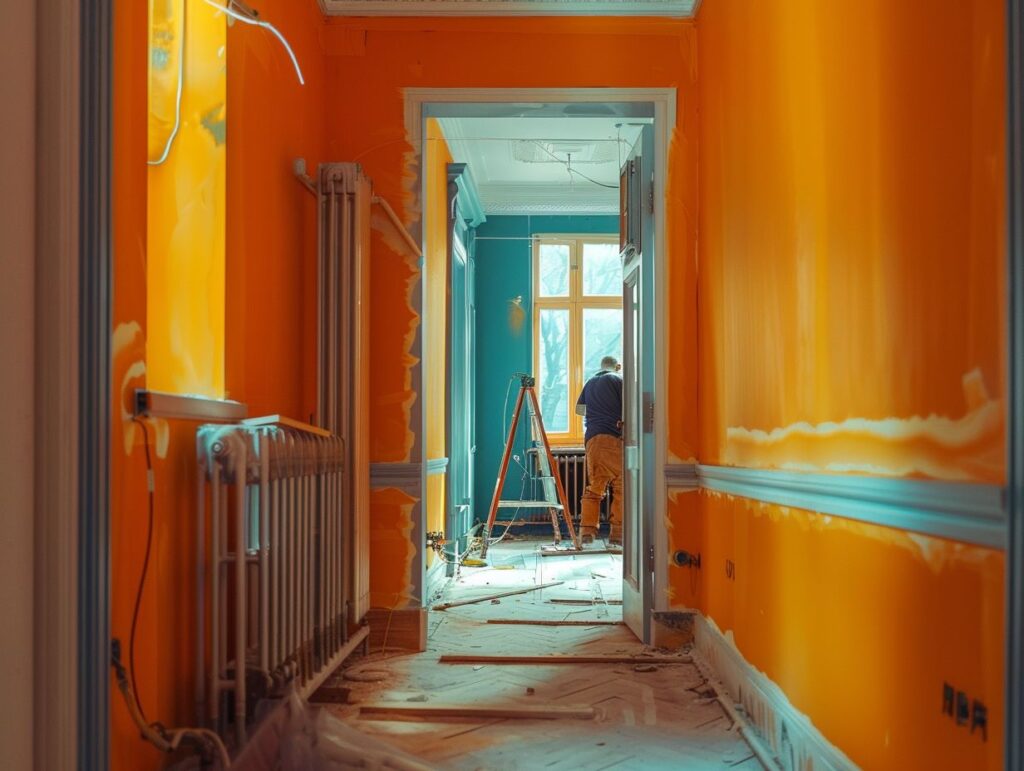When considering the replacement of a hallway radiator, you may find it to be a necessary yet potentially expensive home improvement endeavor. This article comprehensively addresses all facets of replacing a hallway radiator, including the required materials and tools, along with a detailed, step-by-step guide.
Explore the various factors influencing the overall cost, essential supplies, estimated expenses for both materials and labor, as well as cost-effective strategies to assist you in managing your budget effectively.
Whether you are an experienced DIY enthusiast or a new homeowner, this article offers valuable insights for anyone contemplating this project.
Key Takeaways:

- Replacing a hallway radiator can cost anywhere from $200 to $1000, depending on factors such as size, type, and complexity of installation.
- The cost of materials and tools needed for replacement can range from $50 to $300, and may include items such as a new radiator, pipe fittings, and a wrench.
- To save money on replacing a hallway radiator, consider DIY installation, purchasing a more affordable radiator, and comparing quotes from different contractors.
Understanding the Cost of Replacing a Hallway Radiator
When considering the cost of replacing a hallway radiator, you must take into account several factors that can impact the overall expenses. Each aspect, from the size of the radiator to its efficiency rating, plays a critical role in determining the total cost of the replacement project.
The size of the radiator is a significant factor in determining costs, as larger radiators typically require more materials and labour for installation.
Additionally, the efficiency rating of the radiator will directly influence operational costs over time. Heating requirements are also important to consider, as specific areas may require a higher heat output, which will impact the type and size of the radiator needed.
Furthermore, geographical location, especially in the UK, can affect costs due to variations in labour rates and specific heating needs prevalent in different regions.
Factors that Affect the Cost
When replacing a hallway radiator, you need to consider several key factors that will influence the cost. These include the size of the radiator, its BTU output, whether it’s a designer, vertical, or horizontal radiator, the available space in the room, and its overall efficiency.
Designer radiators can significantly impact the cost of replacement. These radiators often come with unique aesthetics and styles that can elevate the overall cost compared to standard radiators that tend to be more cost-effective.
Space considerations are crucial in radiator replacement. If the room layout necessitates a specific size or orientation, customisation may be needed, leading to increased costs.
The efficiency rating of a radiator also plays a role in cost considerations. While higher efficiency models may have a higher upfront cost, they can result in long-term savings on energy bills.
Materials and Tools Needed for Replacement
When planning a hallway radiator replacement, you need to ensure you have all the necessary materials and tools readily available to guarantee a successful installation. It is crucial to select the appropriate type of radiator and have a clear understanding of the installation process to execute a smooth DIY project.
Common materials and tools required for a hallway radiator replacement typically include:
- The radiator itself
- Valves for regulating heat output
- Brackets for mounting
- Pipe cutter
- Pipe wrench
- Teflon tape for sealing joints
- Adjustable wrench
- Spirit level for alignment
- Cloth for cleaning
The installation process involves:
- Draining the old radiator
- Removing it from the wall
- Fitting the new radiator in place
- Connecting the valves and ensuring proper sealing
Prices for radiators vary based on type, size, and material, with options such as cast iron, steel, or aluminium radiators offering different heat dispersion qualities for you to choose from.
List of Necessary Supplies

Before you embark on the replacement of a hallway radiator, it is crucial that you prepare a list of necessary supplies. These may include the radiator itself, fittings, valves, pipe covers, and potentially hiring a professional radiator fitter for installation assistance.
Selecting the appropriate radiator for your hallway is of utmost importance. Ensure it is the correct size and has the right BTU output for effective heating. High-quality fittings and valves are essential to prevent leaks and ensure optimal operation. Pipe covers not only enhance the aesthetics but also provide insulation.
When assessing the potential costs involved, it is essential to budget not only for the supplies but also for any unforeseen expenses that may arise during the installation process. While some individuals may choose a DIY approach, enlisting the services of a professional for installation can ensure a proper and safe setup, mitigating the risk of complications in the future.
Steps to Replace a Hallway Radiator
When replacing a hallway radiator, you will need to follow a series of steps that encompass draining the system and installing the new radiator. Understanding and executing these steps are essential for a successful replacement project that improves the heating efficiency of the hallway.
- To begin the process, you should turn off the heating system and allow the radiator to cool down.
- Once the system has cooled, use a radiator key to completely drain the water, ensuring that there is no remaining liquid in the pipes.
- Carefully disconnect the old radiator from the pipes, taking care to catch any excess water that may spill out during the process.
- After removing the old radiator, it is important to clean the surrounding area before fitting and attaching the new radiator.
- Double-check all connections and joints to verify that there are no leaks present after the installation process is complete.
Step-by-Step Guide
To successfully replace a hallway radiator, you should follow this step-by-step guide that includes shutting off the heating system, draining the radiator, disconnecting the old unit, fitting the new radiator, and ensuring a Gas Safe Registered Engineer checks the installation to confirm safety and compliance.
- Begin by turning off the heating system to prevent any accidents or injuries during the replacement process.
- Next, carefully drain the radiator to avoid spillage and mess.
- Then, proceed to disconnect the old unit by following the manufacturer’s guidelines.
- When fitting the new radiator, make sure to securely attach it to the wall and connect all pipes properly.
- Remember, involving a Gas Safe Registered Engineer is crucial as they have the expertise to ensure that the installation is done correctly, minimising any potential risks or gas leaks.
- Consider labor costs when planning the replacement to budget accordingly for the project.
Cost Breakdown of Replacing a Hallway Radiator
Understanding the cost breakdown of replacing a corridor radiator is essential for budgeting purposes.
By analysing the expenses associated with BTU requirements, corridor specifications, efficiency ratings, and potential DIY job costs, you can make informed decisions about your heating system upgrades.
Calculating the BTU needed for a corridor radiator replacement involves considering the size of the area being heated and the desired temperature increase.
Special attention should be given to corridor-specific requirements such as ensuring the radiator fits the available space and complements the room’s style. Efficiency ratings play a crucial role in long-term costs, as higher-rated radiators can lead to lower energy bills.
Whilst DIY installation can save money, it’s vital to weigh the risks of potential mistakes and additional expenses that may arise without professional assistance.
Estimated Costs for Materials and Labour

When considering the estimated costs of replacing a hallway radiator, you will find that they can vary depending on several factors. These factors include the type of radiator selected, its efficiency rating, the expenses for labour during installation, and any additional services required.
Understanding these estimated costs is essential for homeowners like yourself to effectively plan and budget for the replacement project.
Various elements can influence the overall cost of replacing a hallway radiator. Factors such as the radiator’s size, the quality of materials used, and whether it is a standard or designer model all play a role in determining the total expenses.
Additionally, the complexity of the installation process, including factors like access to the existing plumbing system and any necessary modifications, can have a significant impact on the costs associated with labour.
It is also crucial to consider the quality of the contractor you hire for the job. While experienced professionals may charge higher rates, they can ensure a smoother and more efficient installation process. This level of expertise can ultimately save you money in the long term by avoiding potential issues and ensuring the job is done right the first time.
Tips for Saving Money on Replacing a Hallway Radiator
Saving money on replacing your hallway radiator is achievable with strategic planning and cost-saving measures. Exploring options such as DIY installations, improving home insulation, considering double-glazing installation, or upgrading to a new thermostat can help you optimise your budget while improving your heating system.
If you are considering tackling the project yourself, utilising DIY methods can significantly reduce costs. Thoroughly researching the process, acquiring the necessary tools, and following step-by-step tutorials can streamline the installation process and make it more cost-effective.
Investing in proper insulation for your home can lead to long-term savings on energy bills by effectively retaining heat indoors. Additionally, installing double-glazing can enhance energy efficiency by minimising heat loss and decreasing heating expenses.
Furthermore, upgrading to a new thermostat can provide advanced features such as programmable settings, allowing you to have better control over energy usage and attain additional savings.
Cost-Saving Strategies
When replacing a hallway radiator, you can implement cost-saving strategies to help you stay within budget. Explore options such as purchasing affordable radiators, comparing prices from suppliers, considering regional cost differences between South and North regions, and potentially handling minor installations yourself to effectively reduce overall expenses.
Opting for second-hand radiators or energy-efficient models can also be economical choices. Reach out to multiple suppliers and negotiate for bulk discounts to achieve significant cost savings.
Researching local labour rates and regulations is important, as DIY installation may be feasible depending on the complexity of the task. Seek guidance from online tutorials or consult with professionals for tips on safe and efficient installation practices.
Frequently Asked Questions
What factors can affect the cost of replacing a hallway radiator?

The cost of replacing a hallway radiator can vary depending on factors such as the size and type of radiator, the complexity of the installation, and the location of the radiator within the hallway.
What is the average cost for replacing a hallway radiator?
The average cost for replacing a hallway radiator is typically between $300 and $500. However, the final cost may be affected by the specific factors mentioned above.
Do I need to hire a professional for replacing a hallway radiator?
While it is possible to replace a hallway radiator yourself, it is highly recommended to hire a professional for a proper and safe installation. This will also ensure that the radiator is functioning efficiently and effectively.
Does the cost of a new hallway radiator include installation?
No, the cost of a new hallway radiator typically does not include installation. You will need to factor in the cost of labour for a professional installation, which can range from $50 to $100 per hour.
Are there any additional costs to consider when replacing a hallway radiator?
In addition to the cost of the radiator and installation, you may also need to budget for any necessary repairs or modifications to the existing plumbing or heating system. These costs can vary greatly and should be discussed with your installer beforehand.
Can I save money by purchasing a used hallway radiator?
While it may be tempting to purchase a used hallway radiator to save money, it is not recommended. Used radiators may have hidden defects or may not be compatible with your heating system, potentially leading to further repair costs in the future.

